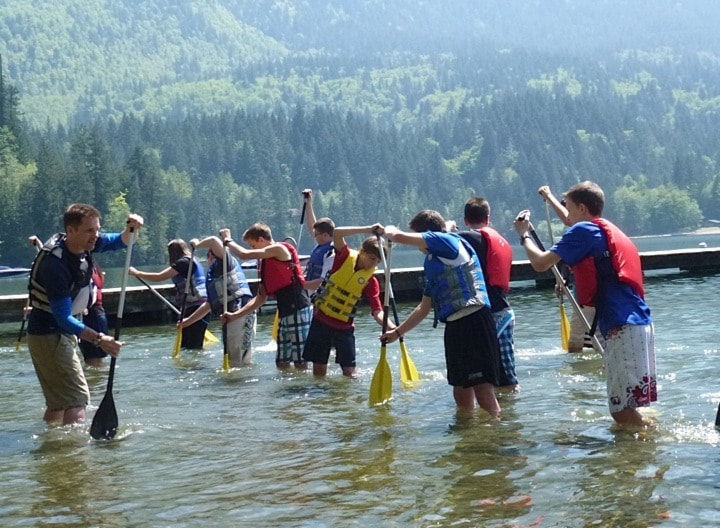A class of Grade 9 Vedder Middle School students spent a Monday two weeks ago photographing the Sea-to-Sky mountain range in order to identify geological ages that formed its various rock layers. They visited Brandywine Falls in Squamish to see how lava flow rock from Mt. Garibaldi's eruptions has eroded to create the waterfall. And another day they studied rocks close up at the Britannia Mine Museum.
The 27 students are part of Vedder Middle's inaugural Outdoor Education Academy. Over the past year, they have spent every second day in the program, busy with activities such as hiking, canoeing, skiing, and snowshoeing, to learn about the natural environment. At the end of the year, the academy grants them credits for Grade 9 science, social studies, physical education, and outdoor education.
While part of an effort to take learning outside of the classroom, the program has seen clear benefits to self-confidence and competence among youth.
"I've seen a lot of students realizing that they can do a lot more, and are a lot better at things than they ever thought they would be," said teacher Chris Falk, who runs the program with another teacher, Jason Shea. "We have a few people for sure that you can just see that their confidence in themselves, from beginning of year to now, is far more improved."
The students have also become a tight-knit group.
"You actually have to get along with people if you're going to camp with them for three days," said outdoor ed student Amber Howard.
The teachers balance the program by doing more classwork during the winter, when there are fewer outdoor trips.
"And also, as often as we can, we're trying to apply those social studies and those science classes to the things that we're doing when we're out there," said Falk.
Some classes count only for physical and outdoor education, but that knowledge — for example, canoe paddling skills developed on Cultus Lake — allows the students to head on trips to learn about their environment.
Student Danyka Van Santen said that she has not fallen behind her peers in the traditional academic program.
"We do learn the same amount of stuff, just in different ways," she said.
One major advantage to the program, according to Falk, is being able to disregard the traditional block structure of middle school programming, where teachers have students for set time blocks of about an hour each. That makes it very difficult to organize trips.
Falk and Shea have dedicated significant personal time to the program, such as all the extra trips they have made to plan out student activities.
"Every trip we've done, we've made sure we've gone and scouted it out beforehand...We've gotten very efficient at very fast hiking to get it done," said Falk.
There were no injuries this year, and the teachers have undergone specialized professional development to be prepared to handle emergency situations. Both have advanced wilderness first aid certifications, Shea completed a swiftwater rescue course, and Falk an avalanche course. Falk expects the time commitment to decrease with more years with the program.
The academy system has become popular in Chilliwack, because it allows public schools to charge for academic programming. Five Chilliwack schools offer a total of seven academies, covering baseball, golf, hockey, soccer, and outdoor ed.
But academies have received criticism for being elitist, and presenting high financial barriers to entry. The outdoor ed program's price ticket, which includes all transport, equipment rentals, and guides, is set at $800. Not every family can afford that.
Falk insists that the outdoor ed program is different, because it is significantly less expensive than the others, and it is multi-disciplinary.
"We want everyone to apply. Once we figure out if it's a good fit for you, we want to work with the parents to make sure we can make that fee as easy as possible," said Falk, who also spends time looking for funding opportunities.
The future plan is to establish bursaries so that students who would especially benefit from the non-traditional outdoor learning environment would not be left out. This includes students who think they would learn better outside of the classroom, who would like to get into better shape, or who would like to try different outdoor activities.
The program is fully booked for next year with 30 students, out of the 40 that applied.
Students seem thrilled with the program this year.
"You get to try new things, and have fun doing it," said student Amber Howard.
akonevski@theprogress.com twitter.com/alinakonevski